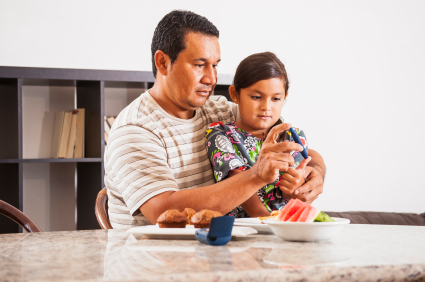
As a pediatric endocrinologist, I find the sharp increase in type 2 diabetes cases among children truly alarming.
Not too long ago, pediatricians considered type 2 diabetes in children an anomaly—accounting for only 1 or 2 percent of all pediatric diabetes cases. Now, government statistics indicate that as many as one in three children diagnosed with diabetes has type 2 diabetes, and the U.S. Centers for Disease Control and Prevention estimate that about 3,600 more children are being diagnosed with type 2 diabetes each year. Most are nonwhite, between 10 and 19 years old and medically obese, and report having a family history of type 2 diabetes. These facts can be attributed largely to the rise in childhood obesity.
The best way to help these children is by implementing an early action plan, making it imperative that pediatricians know the best treatment options and practices available.
Help for these doctors has recently arrived in the form of the first-ever guidelines written for children and adolescents with type 2 diabetes, issued by the American Academy of Pediatrics (AAP).
Here are the AAP guidelines as well as some of my thoughts about what they mean for doctors and patients:
1. If you are at all unclear if the child or adolescent has type 1 diabetes (T1DM) or type 2 diabetes, they present in any type of ketosis, they have a blood glucose (BG) equal to or over 250mg/dL or an HbA1c over 9%, start them on insulin and continue until you are able to definitively determine the type of diabetes.
Obesity can make diagnosis more difficult. In the past, a child with diabetes usually had type 1 and was often thin, had no family history of diabetes and presented at diagnosis in ketoacidosis (DKA). Now, as many as 24 percent of children with type 1 may be overweight at the time of diagnosis, like their type 2 counterparts.
Further complicating diagnosis, children with type 2 diabetes can be just as sick as type 1 patients at diagnosis. They may present with elevated HbA1Cs, in DKA and with ketonurea (an excess of ketones in the urine). Therefore, it is extremely important that precautions be taken; when the diagnosis is not clear, the patient should be kept on insulin. Insulin ensures that the patient returns to having normal glucose levels as soon as possible regardless of the type of diabetes. It’s important that pediatricians explain to parents that it is safe for their children to take insulin and that it might be needed only temporarily until a definitive diagnosis is confirmed.
2. In other situations, newly diagnosed children and adolescents with type 2 diabetes should initiate lifestyle modifications, including diet changes (using the Pediatric Weight Management Evidence-Based Nutrition Practice Guidelines) and exercise, and start Metformin as a first-line therapy. Exercise suggestions include encouraging children and adolescents with type 2 diabetes to engage in moderate to vigorous exercise for at least 60 minutes daily and to limit nonacademic “screen time” to less than two hours daily.
Starting newly diagnosed type 2 children on a healthy path as soon as possible is a key to treatment success. The entire family must work together to create an environment with healthy food choices and daily physical activity. It is important that doctors educate the family and equally important that family members provide positive reinforcement and make overall family health a higher priority.
If treatment goals for nutrition education and exercise are not met, pharmacologic therapy is warranted. The only oral agent approved for use in the pediatric population is Metformin, which is used in both adults and children to reduce blood glucose levels.
Metformin has the added advantage of helping with weight reduction and improving lipid profiles. However, treatment with Metformin also may normalize ovulatory abnormalities in girls with polycystic ovarian syndrome and increase the risk of unplanned pregnancy. Therefore, preconception and pregnancy counseling should also be part of the treatment regimen for all girls and women of childbearing age with type 2 diabetes.
3. Monitor HbA1c every three months and intensify goals for monitoring blood glucose levels if treatment goals are not being met. Patients should be advised to monitor BG levels if they are taking insulin or other medications that have a risk of hypoglycemia, are initiating or changing their diabetes treatment regimen, have not met treatment goals or have an additional illness.
The American Diabetes Association recommends that patients have an HbA1c under 7 percent. For this reason it is important that pediatric type 2 patients correctly monitor blood sugar levels. This information, obtained before and after meals, at the fasting state and before bed, can help doctors make changes in medications, diet and physical activity until treatment goals are met.
Although prevention is always preferable to cure, the recent advances in diabetes treatment offer great promise of improved, if not ideal, glycemic control and associated health-related benefits, thus reducing or preventing the long-term complications of diabetes in this population.
Guidance from the AAP provides a much-needed road map—which should be augmented with continued research and persistent attention to this growing population. Because diabetes can be a lifelong condition whose deleterious effects increase over time, it is critical that these guidelines be followed closely. Still, it’s important to stress that these are only guidelines, and doctors and families need to work as a team to provide individualized care for these children and adolescents.

